Today was a great MagAO-X day. We had great seeing and things worked well, we were able to get a lot done today and make some nice science-y images!
Engineering continued again tonight with a smattering of science. Tonight we worked on commissioning the non-redundant aperture mask (NRM), which is a technique for achieving high resolution images from the ground. Our collaborators Dr Josh Eisner and Dr Jordan Stone joined us via zoom to commission MagAO-X’s NRM observing mode on a bunch of their science targets.
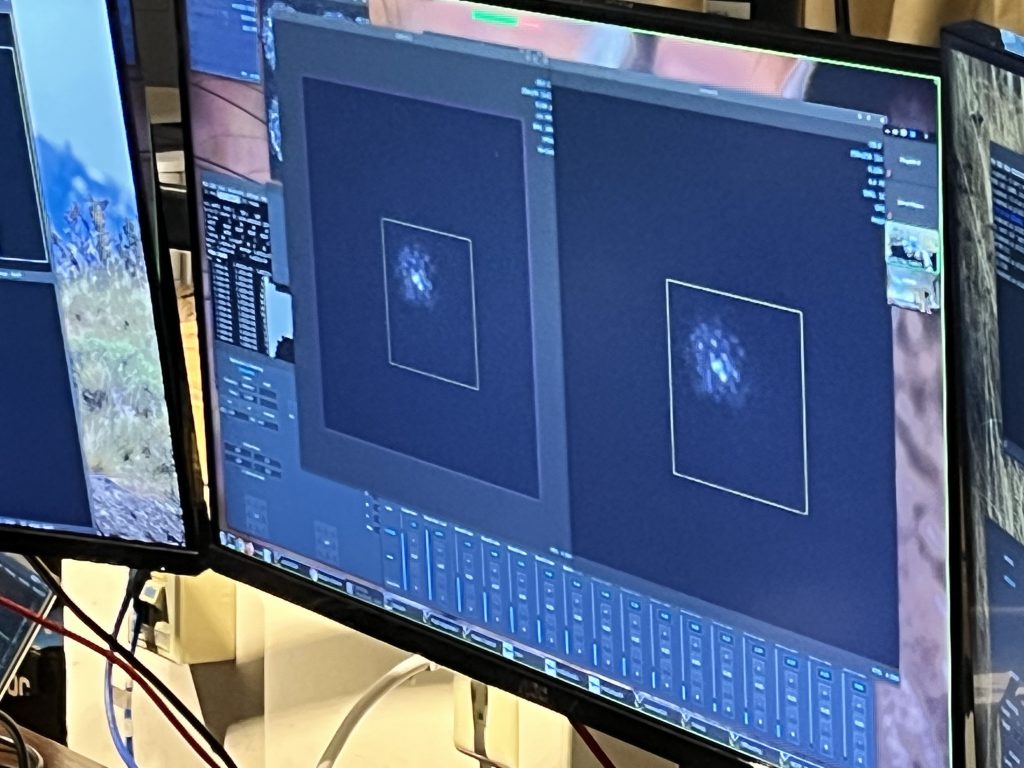
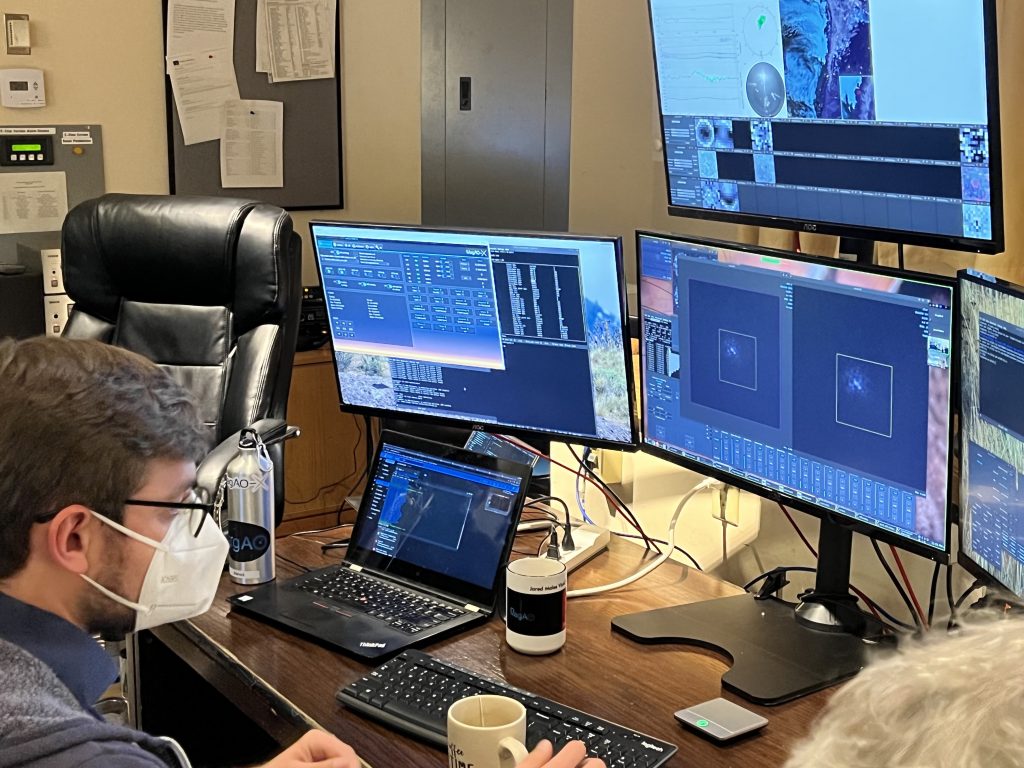
The top image here shows science camera 1 (left) and 2 (right) during the NRM imaging run. The image on camsci1 is continuum (kinda like the baseline emission from the source) and on camsci2 is H-alpha, a hydrogen emission line that is very bright when the star is accreting (eating up gas and dust). It doesn’t really *look* like a star right now, and is all blurry-looking, because of how the masking works. Some fancy math is needed to reconstruct the images into more eye-pleasing and scientifically meaningful images.
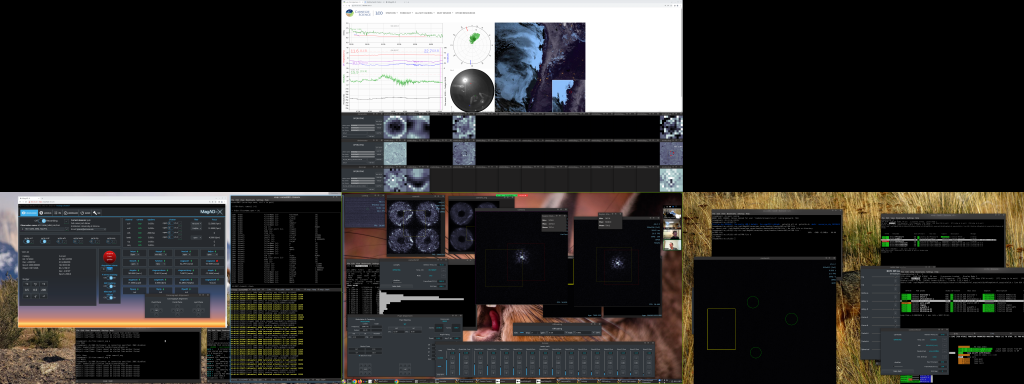
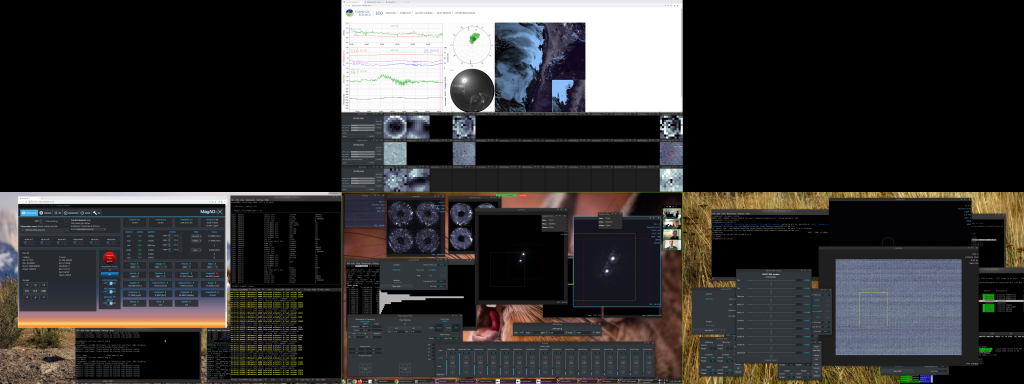
We also got to look at one of my science targets. I am trying to detect some white dwarf stars. A white dwarf is the hot core of a star that remains after the star has evolved and shed all of its outer material (called the envelope). White dwarfs are interesting to me because they can serve as an important probe of planet systems at the end of a star’s life. The surface of a white dwarf is either pure hydrogen or helium, so if you see any other materials in the spectrum of a white dwarf (which astronomers call “metals”), it has been recently deposited there by planetary material or debris eaten by the star!
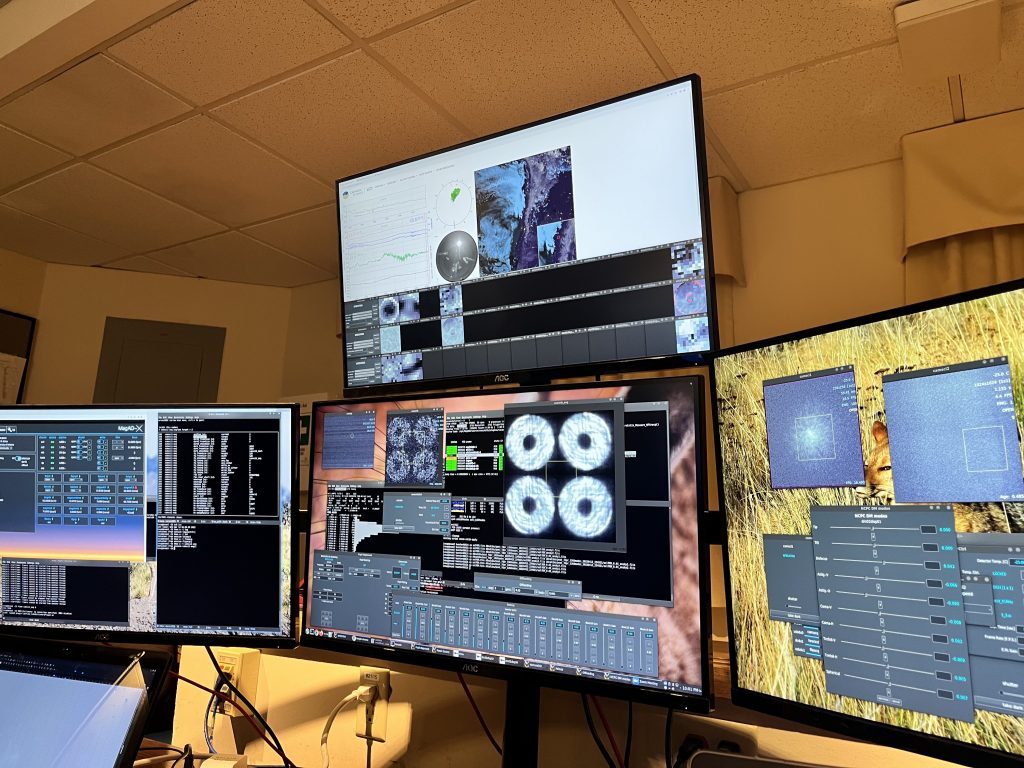
And we ended the night with some lovely images of Baade’s window, an area of dense stars towards the galactic center and with little dust that we use for measuring the astrometry, or the position of stars. One of the important things to determine about your instrument is how distances and angles in an image relate to distances and angles on the sky. To do that, we need to take images that contain multiple stars for which we already know their on-sky astrometry, and compare that to measurements in an image. So you want a crowded field with a lot of stars, so that you can have many stars fall within your image, and with existing well-documented measurements between the stars. Baade’s window is a good target for this, so getting many good images of it in all our filters is a top priority.
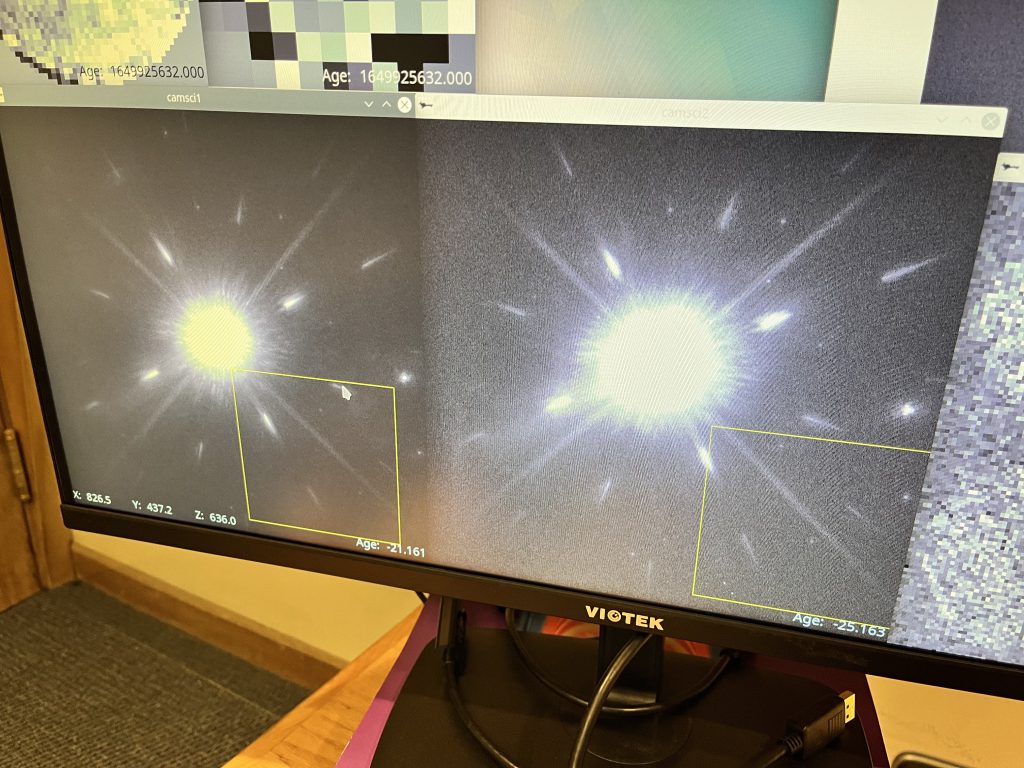
Our friend Carlos showed up for dinner again and struck a commanding pose in front of the sunset. Good boy.
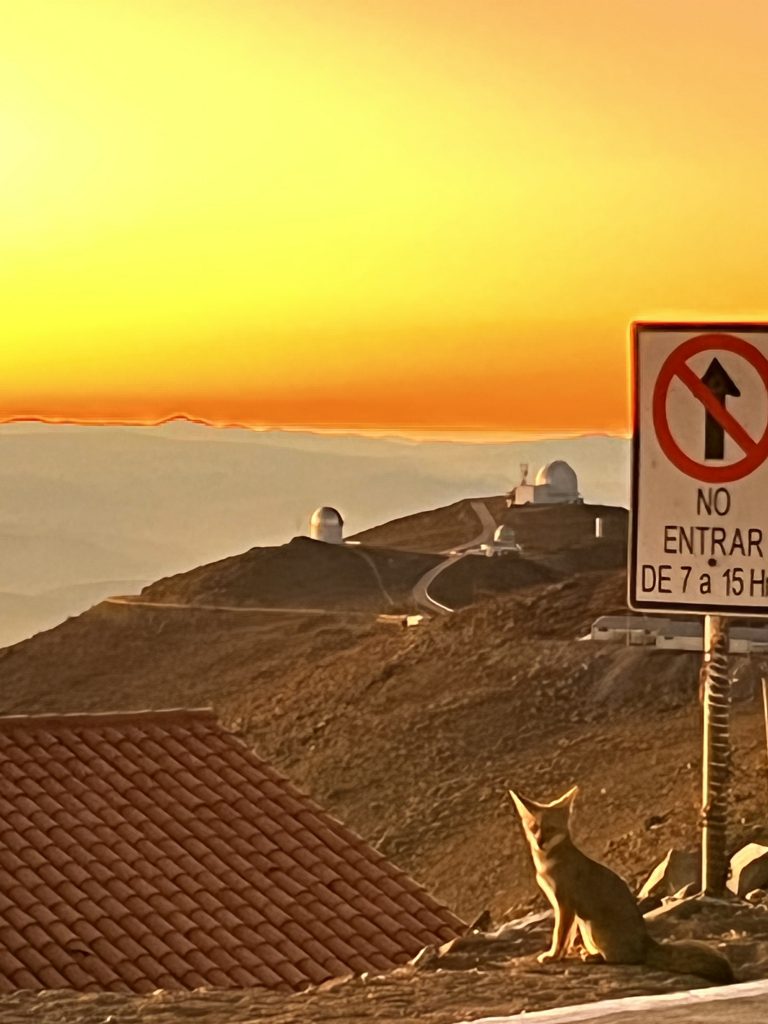
The moon is waxing towards full and lighting up the mountains all night here. The song of the day is Who Built the Moon? by Shinyribs